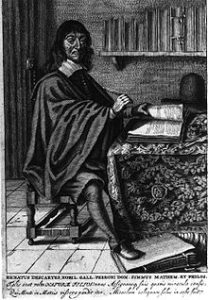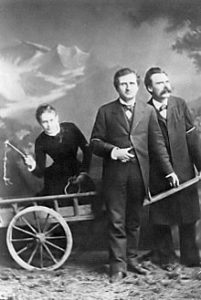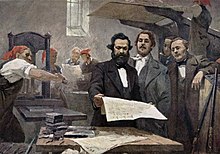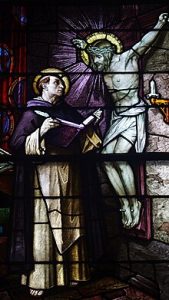Rene Descartes was a mathematician, philosopher, physiologist, mechanic and physicist whose ideas and discoveries played a major role in the development of several scientific fields at once. He developed the algebraic symbolism that we use to this day, became the “father” of analytical geometry, laid the foundations for the development of reflexology, created mechanism in physics – and these are far from all of his achievements.
Childhood and Youth
René Descartes was born in the city of Lae on March 31, 1596. The name of this city was later renamed “Descartes”. René’s parents were representatives of an old noble family, which in the 16th century was barely making ends meet. René was the third son in the family. When Descartes was 1 year old, his mother died suddenly. The father of the future famous scientist worked as a judge in another city, so he rarely visited the children. Therefore, after the death of his mother, Descartes Jr.’s grandmother took on the task of raising him.
From an early age, René demonstrated amazing curiosity and a desire to gain knowledge. At the same time, he had fragile health. The boy received his first education at the Jesuit college of La Fleche. This educational institution was distinguished by a strict regime, but Descartes, given his health, was given some concessions in this regime. For example, he could wake up later than other students.
Like most colleges of the time, La Flèche’s education was religious in nature. And although learning meant a lot to the young Descartes, this focus of the educational system engendered and strengthened in him a critical attitude toward the philosophical authorities of the time.
After completing his studies at the college, René went to Poitiers, where he received a bachelor’s degree in law. He then spent some time in the French capital, and in 1617 he entered military service. The mathematician participated in military actions in Holland, which was then engulfed in revolution, and also in the short battle for Prague. In Holland, Descartes became friends with the physicist Isaac Beeckman.
Then René lived in Paris for some time, and when the followers of the Jesuits learned about his bold ideas, he went back to Holland, where he lived for 20 years. Throughout his life, he was persecuted and attacked by the church for his progressive ideas, which were ahead of the level of scientific development in the 16th-17th centuries.
Philosophy
The philosophical teaching of René Descartes was characterized by dualism: he believed that there is both an ideal substance and a material one. Both principles were recognized by him as independent. René Descartes’ concept also assumes the recognition of the presence of two types of entities in our world: thinking and extended. The scientist believed that the source of both entities is God. He forms them according to the same laws, creates matter in parallel with its rest and movement, and also preserves substances.
René Descartes saw a unique universal method of cognition in rationalism. At the same time, the scientist considered cognition itself a prerequisite for man to dominate the forces of nature. According to Descartes, the possibilities of reason are constrained by man’s imperfection, his differences from the perfect God. René’s reasoning about cognition in this vein, in essence, laid the foundation for rationalism.
The starting point of most of Rene Descartes’s searches in the field of philosophy was doubt in the truthfulness and infallibility of knowledge related to the generally accepted. Descartes’s quote “I think – therefore I exist” is conditioned by these considerations. The philosopher stated that each person can doubt the existence of his body and even the external world as a whole. But at the same time, this doubt will definitely remain existing.
Mathematics and physics
The main philosophical and mathematical result of Rene Descartes’ work was the writing of the book “Discourse on the Method”. The book contained several appendices. One appendix contained the basics of analytical geometry. Another appendix included rules for studying optical devices and phenomena, Descartes’ achievements in this field (he was the first to correctly formulate the law of refraction of light), and so on.
The scientist introduced the currently used exponent, the line over the expression taken under the root, and began to denote unknowns with the symbols “x, y, z” and constants with the symbols “a, b, c”. The mathematician also developed a canonical form of equations, which is still used today for solving (when the right side of the equation is zero).
Another achievement of René Descartes, important for the improvement of mathematics and physics, is the development of a coordinate system. The scientist introduced it in order to make it possible to describe the geometric properties of bodies and curves in the language of classical algebra. In other words, it was René Descartes who made it possible to analyze the equation of a curve in the Cartesian coordinate system, a special case of which is the well-known rectangular system. This innovation also made it possible to interpret negative numbers in much more detail and accurately.
The mathematician studied algebraic and “mechanical” functions, while arguing that there is no single method for studying transcendental functions. Descartes primarily studied real numbers, but began to take complex numbers into account. He introduced the concept of imaginary negative roots, associated with the concept of complex numbers.
Research in mathematics, geometry, optics and physics later became the basis for the scientific works of Euler, Newton and a number of other scientists. All mathematicians of the second half of the 17th century based their theories on the works of René Descartes.
Personal life
Little is known about René Descartes’ personal life. Contemporaries claimed that he was arrogant and silent in society, preferring solitude to company, but in the circle of close people he could show amazing activity in communication. René apparently did not have a wife.

In adulthood, he fell in love with a servant who bore him a daughter, Francine. The girl was born illegitimately, but Descartes fell deeply in love with her. At the age of five, Francine died of scarlet fever. The scientist called her death the greatest tragedy of his life.
Death
For many years, René Descartes was persecuted for his fresh outlook on science. In 1649, he moved to Stockholm, where he was invited by the Swedish Queen Christina. Descartes corresponded with the latter for many years. Christina was amazed by the scientist’s genius and promised him a quiet life in the capital of her state. Alas, René did not enjoy life in Stockholm for long: soon after moving, he caught a cold. The cold quickly developed into pneumonia. The scientist passed away on February 11, 1650.
There is an opinion that Descartes died not from pneumonia, but from poisoning. The role of poisoners could have been played by agents of the Catholic Church, which did not like the presence of a freethinking scientist next to the Queen of Sweden. The Catholic Church intended to convert the latter to its faith, which happened four years after René’s death. This version has not received objective confirmation to date, but many researchers are inclined to it.




















































